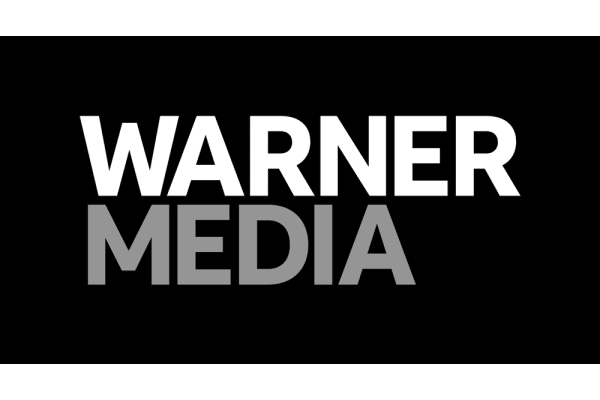
HBO Max Boosts Subscribers and Revenue for WarnerMedia in Q3
AT&T’s WarnerMedia is holding its own despite growing competition in the streaming entertainment industry. In AT&T’s third quarter 2021 financials, WarnerMedia reported total revenue of $8.4 billion, an increase of 14.2% year-over-year. The entertainment division of AT&T attributes the increase in total revenue to “partial recovery” from the pandemic and higher subscription revenue. Subscription revenue grew 14.7% to $4.0 billion, primarily due to the company’s 16-month-old direct-to-consumer streaming serviceHBO Max.
John Stankey, AT&T CEO, commented on AT&T’s results for the quarter, including WarnerMedia’s contributions, in an October 21, 2021 news release.
“We continue to execute well in growing customer relationships, and we’re on track to meet out guidance for the year,” said Stankey. “We had our best postpaid phone net add quarter in more than 10 years, our fiber broadband net adds increased sequentially, and HBO Max global subscribers neared 70 million. We also have clear line of sight on reaching the halfway mark by the end of the year of our $6 billion cost-savings goal.”
Third quarter highlights
Other quarterly financial highlights include the following:
- Content and other revenue was $3.1 billion, a 31.7% increase year-over-year, due to higher TV licensing and theatrical revenue.
- Advertising revenue was $1.4 billion, a 12.4% decrease, due to the timing of the NBA season and lower political advertising revenue this year compared to last year. The decrease is somewhat surprising because HBO Max’s ad-supported tier launched in June 2021.
- Operating expenses were $6.4 billion, a 13.8% increase. WarnerMedia attributed the increase to higher film and non-sports programming costs, increased marketing costs, and incremental selling costs related to DIRECTV advertising revenue sharing agreements.
- Because of the timing of the NBA season, programming sports costs were lower, however, which helped to offset higher spending in other categories.
- Operating income was $2.0 billion, a 15.2% increase year-over-year, and operating income margin was 23.8%, slightly higher than the operating income margin of 23.6% for the same period last year.
Subscription highlights
As of September 30, 2021, HBO and HBO Max had 69.4 million global subscribers*, an increase of 12.5 million over the third quarter of 2020, and an increase of 2.1 million since July. Though the company saw increases in international and ad-supported subscriber totals, these were partially offset by HBO Max being discontinued on the Amazon wholesale platform. By year end, WarnerMedia estimates that HBO and HBO Max will have between 70 million and 73 million customers, and they are quite close to that range already.
At the end of the quarter, there were 38.0 million domestic HBO and HBO Max subscribers, an increase of 7.1 million for the same period last year. Domestic subscriber ARPU (average revenue per user) was $11.82.
In AT&T’s slide presentation, the company said HBO Max experienced strong subscriber growth in Latin America. The service launched in Spain and the Nordics in October, and WarnerMedia is planning further expansion into new international markets in 2022. HBO Max won’t be available in the U.K. anytime soon, however. HBO currently has a licensing agreement with Sky which doesn’t expire until 2025.
The company also noted that its fourth quarter content slate is strong, which could help the company attract and retain subscribers as other streaming companies also experience recovery from the pandemic and return to more normal production schedules.

[Editor’s note: In AT&T’s news release, they specify that total subscribers of 69.4 million are combined subscribers for HBO and HBO Max. However, Stankey specifically said HBO Max had close to 70 million subscribers in his remarks. It seems that he may have misspoken.]
During the earnings call last week, Jason Kilar, CEO of WarnerMedia, fielded a question on how HBO Max’s launch of their ad-supported tier this summer.
“…we’ve been happy with the launch, which was in June of this year. So this is the first full quarter. And we’re happy not just in terms of the absolute response, in terms of subscribers, but also because advertising helps lower the price and increase the value for an HBO Max subscription. So we see it as rather strategic, and we’re very excited about where that goes,” Kilar said.
Kilar noted one key difference between the ad-supported tier and the ad-free tier, besides the price. The two tiers have different content. For example, ad-free tier subscribers will have access to Matrix, King Richard and Dune, while ad-supported tier subscribers will not.
WarnerMedia’s merger with Discovery Inc. is still on pace to close in the middle of 2022, Stankey said.

Insider Take
Sixteen months since the launch of HBO Max, and it is on its way to becoming one of the top streaming services in terms of the quality of content like theatrical releases. In terms of subscribers, HBO Max has some ground to make up. Netflix reported 213.6 million global subscribers at the end of the third quarter. In August, Disney reported that Disney+ had 116 million subscribers.
HBO Max may not be putting up the big numbers yet, but with both an ad-supported tier and a premium tier, and a pending merger with Discovery Inc. who reported 15 million total paying streaming subscribers of its own in April, we anticipate they’ll be strong competitors in the direct-to-consumer streaming world in the next 12 to 18 months.





